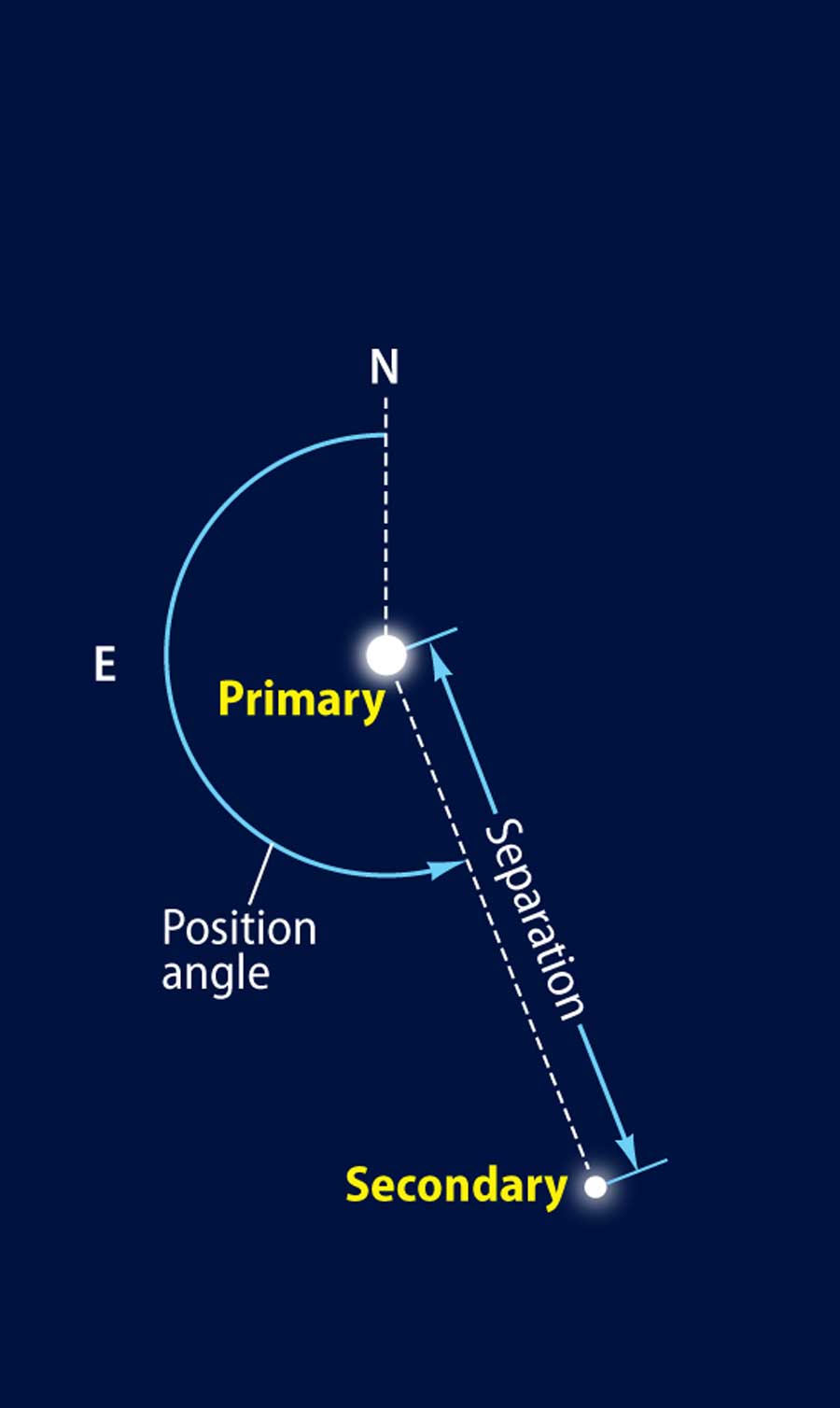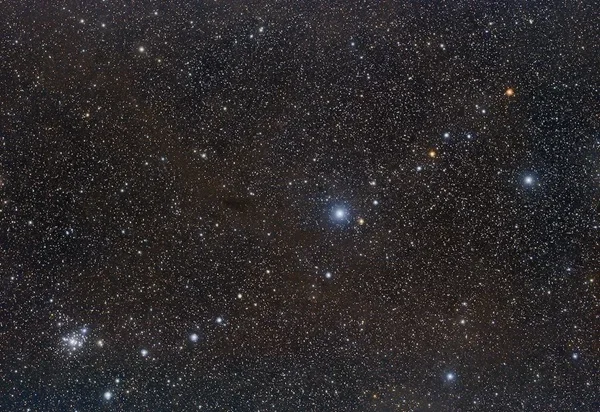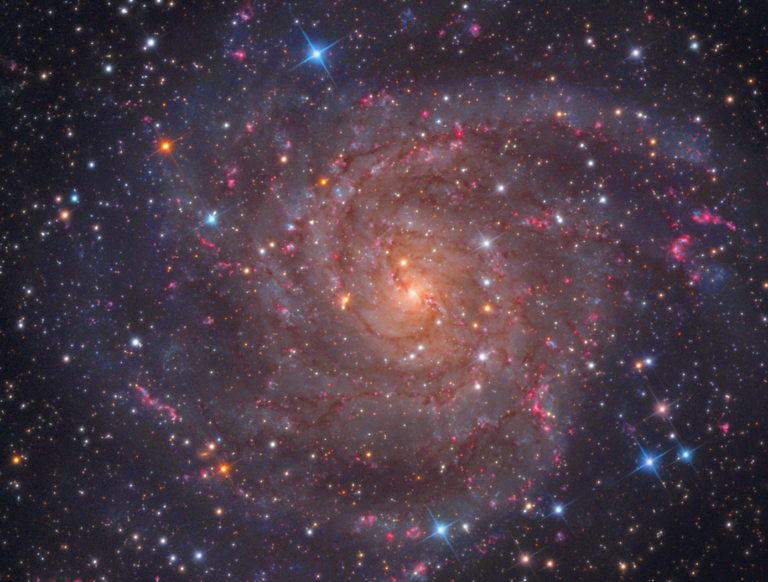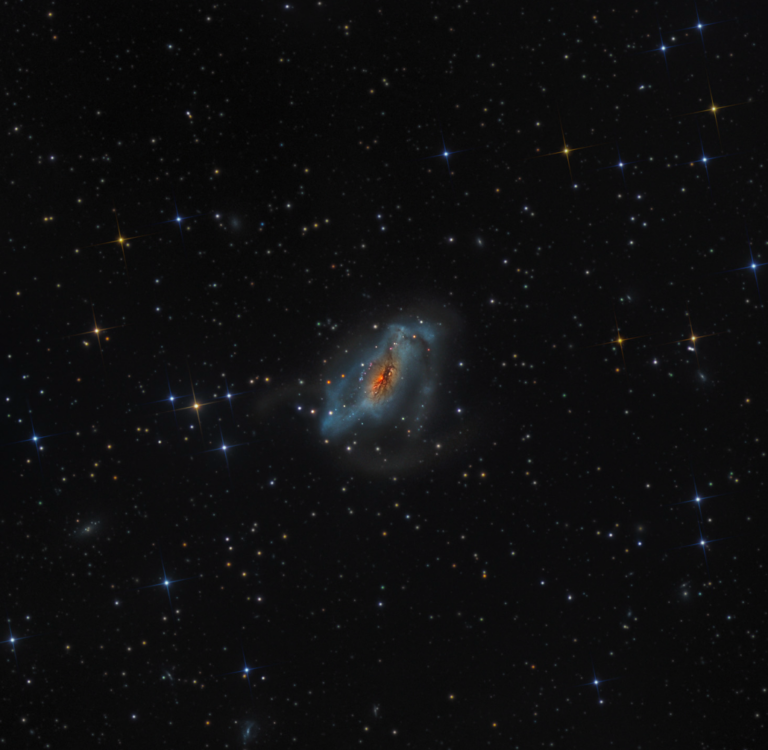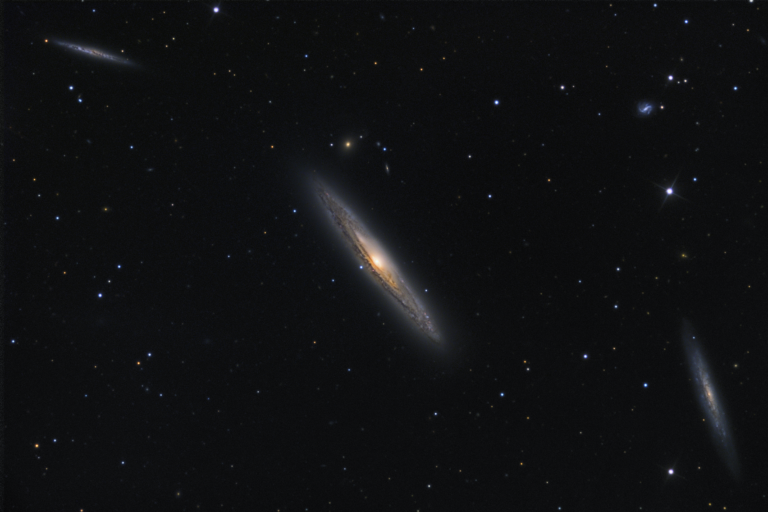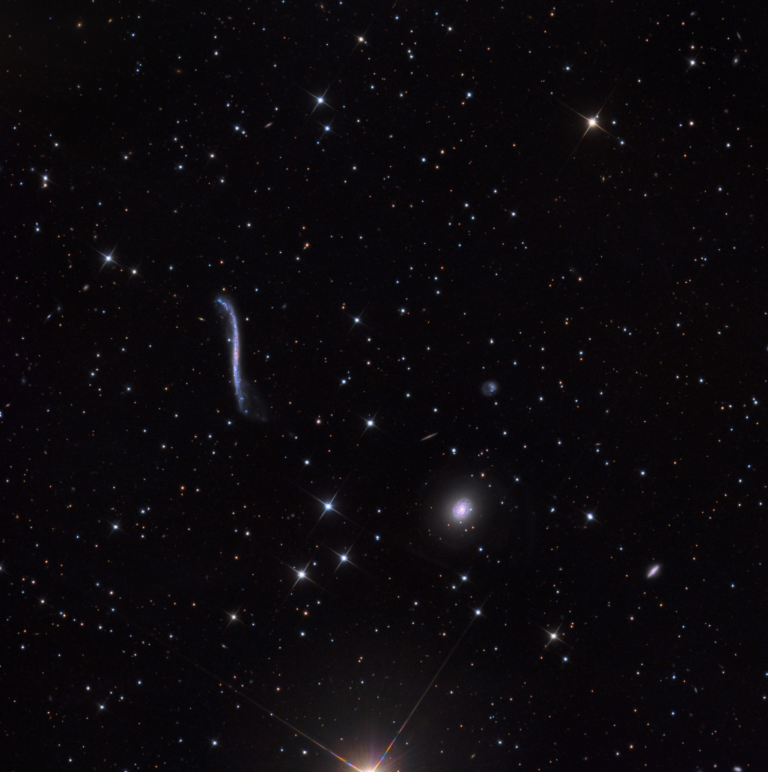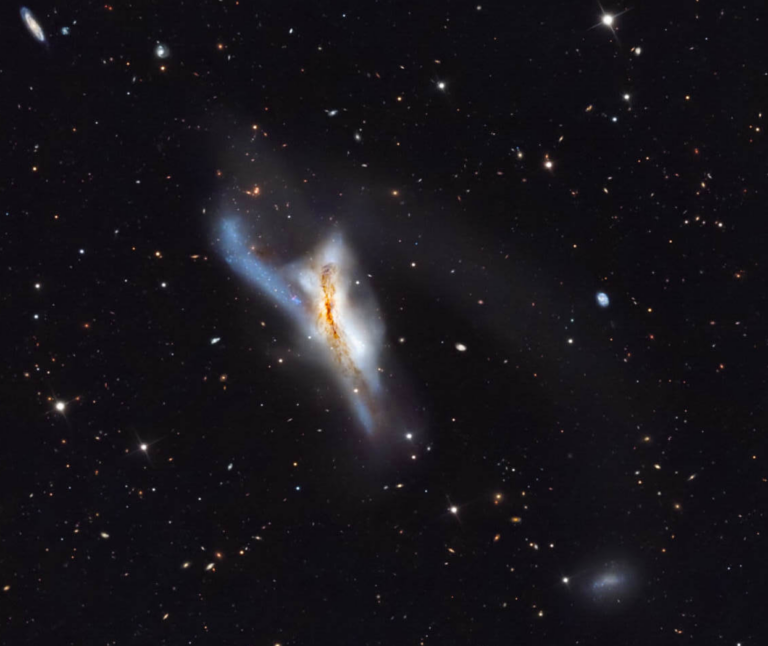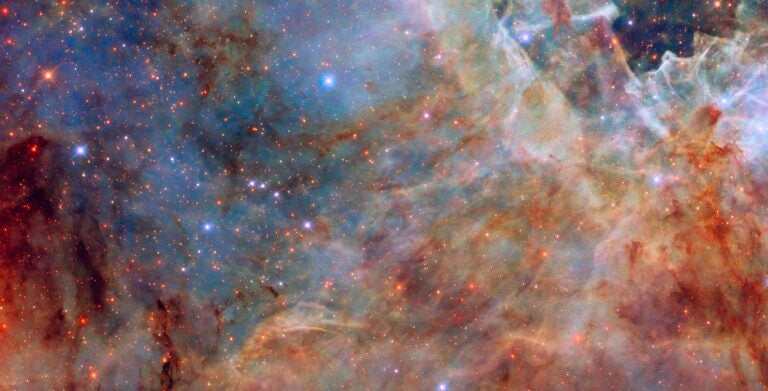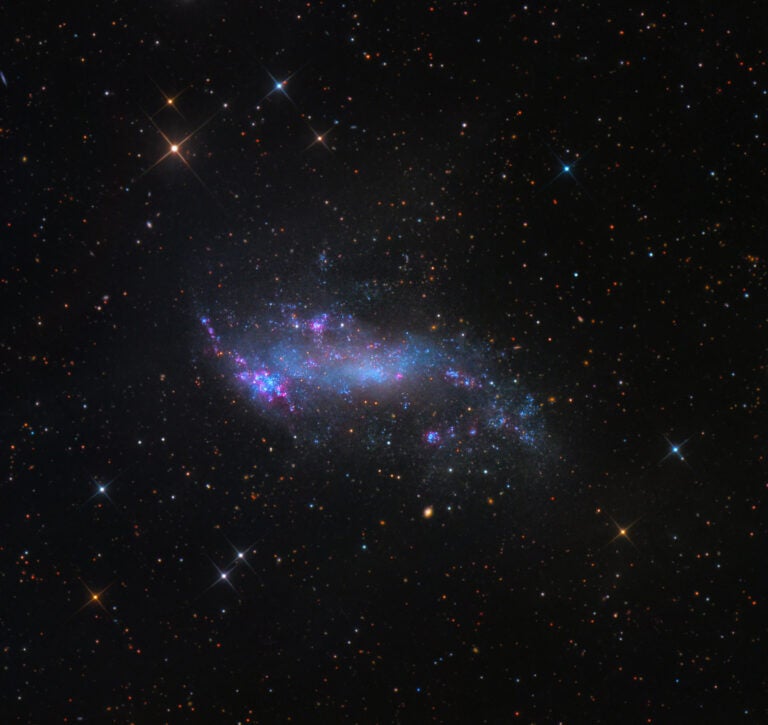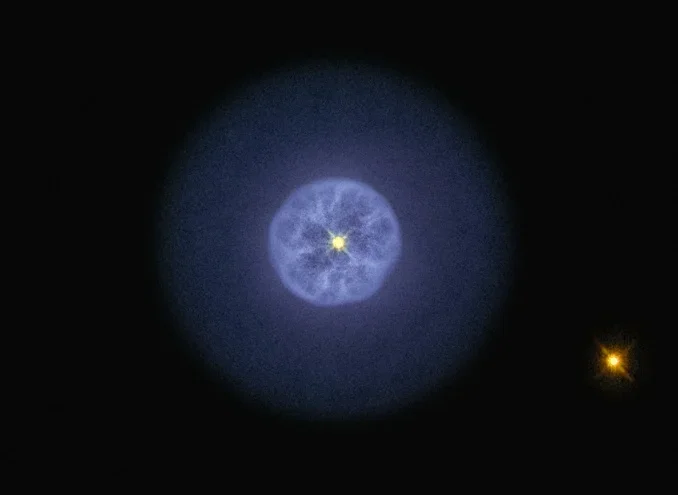Catalog data for a double star include three elements: the magnitudes of the components, their separation in arcseconds, and the position angle (location of the fainter, or secondary, star relative to the primary). The magnitudes and separation tell us whether a double star is easy or difficult to resolve. Wide pairs are easier to split than close ones; double stars that consist of equally bright partners are better resolved than those whose members differ greatly in magnitude.
The position angle (abbreviated P.A.) is the angle — measured from north (0°) eastward — between two imaginary lines; one is drawn from the brighter star toward celestial north and another is traced from that star through the companion. If the companion is due east of the primary, the P.A. is 90°, south 180°, and so on. The P.A. is useful to those who wish to confirm the sighting of a secondary that’s faint, extremely close, or both.
But enough talk about double stars. Let’s go outside and experience them. Try these early summer double stars, all of which are plotted on Astronomy’s monthly StarDome map (p. 38–39).
Alpha (α) Librae (magnitudes 2.7 and 5.2, 231″ separation, P.A. 314°): Our warm-up double is composed of stars so bright and widely separated that you can catch them with binoculars. If you use a telescope, work with the lowest magnification. Can you detect their yellow and bluish colors?
Delta (δ) Herculis (magnitudes 3.1 and 8.3, 12.8″ separation, P.A. 285°): This system is a textbook example of an optical double star whose components appear side by side only by chance alignment. Like the proverbial “ships passing in the night,” the fainter and more distant star is moving steadily westward at nearly a right angle to the southbound primary. One hundred twenty times fainter than the main star, the companion may be hard to discern through small scopes unless you crank up the magnification. I’ve seen it through a 3-inch reflector at 60x, but I recommend twice that power. If you’re not positive you’ve captured this elusive pair, let Delta Herculis drift across the eyepiece field. Its P.A. (285°) places the secondary approximately west of the primary, and it should precede the primary as the two exit the field of view. If your suspect doesn’t, you’ve been tricked! Increase the magnification and try again.
Alpha Herculis (magnitudes 3.5 and 5.4, 4.7″ separation, P.A. 103°): This showpiece ranked sixth on a “Top Ten Doubles” survey I conducted for Deep Sky Monthly in the late 1970s. The colors, generally described as yellow or orange and pale blue, are exquisite! A modest-sized telescope can comfortably split Alpha Herculis, as long as you work with a magnification of 100x or greater. The companion lies roughly east of the main star.
Sigma (σ) Scorpii (magnitudes 2.9 and 8.4, 19.8″ separation, P.A. 271°): With similar magnitudes but twice the separation of Delta Herculis, Sigma Scorpii is a relatively easy small-scope target. As is the case with Delta Her, the secondary drifts ahead of the primary. But unlike Delta Her, Sigma Sco is the real deal — a gravitationally bound pair separated by 420 billion miles (675 billion kilometers).
Antares (Alpha Scorpii) (magnitudes 1.0 and 5.4, 2.5″ separation, P.A. 274°): We finish with a worst-case double star — a close and unequal duo. You’ll need medium to large aperture (6 inches and up), high magnification, and steady skies to notch Antares, especially from northerly latitudes where it stands low in the southern sky. Its faint partner, which some see as a greenish speck awash in the glare of the ruddy main star, has a westerly P.A. and leads the way as the two stars traverse the field of view.
Long before skies darken enough for faint fuzzies to become visible this season, these intriguing pairs will be waiting to greet your eye. And once you’ve been exposed to their contagious beauty, you may find yourself stricken with double star fever!
Questions, comments, or suggestions? Email me at gchaple@hotmail.com. Next month: Celebrate Moon Day. Clear skies!


